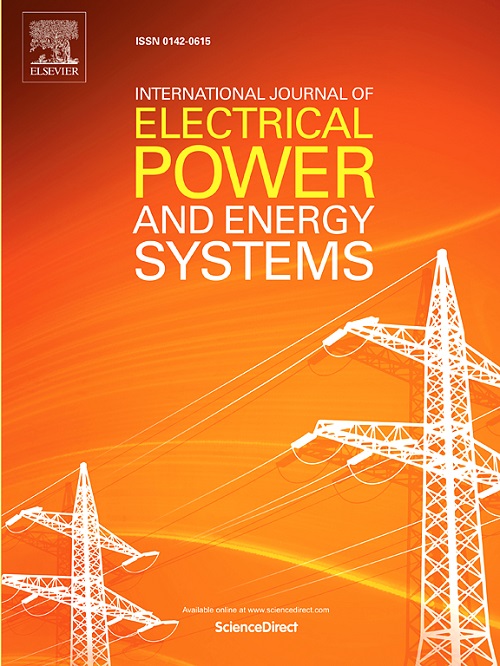A data-physical fusion method for economic dispatch considering high renewable penetration and security constraints
IF 5
2区 工程技术
Q1 ENGINEERING, ELECTRICAL & ELECTRONIC
International Journal of Electrical Power & Energy Systems
Pub Date : 2025-04-22
DOI:10.1016/j.ijepes.2025.110691
引用次数: 0
Abstract
Economic dispatch plays a pivotal role in ensuring the safety and reliability of new power systems. Conventional model-based methods of economic dispatch encounter significant challenges due to the increasing uncertainties brought about by high renewable penetration. Reinforcement learning (RL) has shown great potential because it does not depend on probability distribution modelling of uncertainties. However, the disparity between training scenarios and real-world applications hinders the broader adoption of RL. To address these challenges, this paper presents a data-physical fusion method for economic dispatch considering high renewable penetration and security constraints. An invertible mapping is introduced in the action space of the Markov decision process model, comprising a balance layer and a reverse mapping. The invertible mapping can increase the exploration efficiency and guide the training quality of agents. Then, a physics-informed neural network based on the deep deterministic policy gradient algorithm is employed for fine-tuning and transfer learning. Physical models of unsatisfied constraints are integrated into the critic using Lagrange relaxation. The case studies demonstrate the superior performance of the proposed method in terms of both training speed and decision-making reliability compared to conventional data-driven methods. The fusion of physical models and neural networks enhances the interpretability of data-driven methods, thereby facilitating their broader application in new power systems.
考虑到高可再生能源渗透率和安全约束的经济调度数据物理融合方法
经济调度对保证新建电力系统的安全可靠运行起着至关重要的作用。由于可再生能源的高渗透率带来的不确定性增加,传统的基于模型的经济调度方法面临重大挑战。强化学习(RL)由于不依赖于不确定性的概率分布建模而显示出巨大的潜力。然而,训练场景和实际应用之间的差异阻碍了强化学习的广泛采用。为了解决这些问题,本文提出了一种考虑高可再生能源渗透率和安全约束的数据物理融合经济调度方法。在马尔可夫决策过程模型的动作空间中引入了一个可逆映射,它包括一个平衡层和一个反向映射。可逆映射可以提高智能体的搜索效率,指导智能体的训练质量。然后,采用基于深度确定性策略梯度算法的物理信息神经网络进行微调和迁移学习。使用拉格朗日松弛将未满足约束的物理模型整合到批评家中。案例研究表明,与传统的数据驱动方法相比,该方法在训练速度和决策可靠性方面都具有优越的性能。物理模型和神经网络的融合增强了数据驱动方法的可解释性,从而促进了其在新型电力系统中的广泛应用。
本文章由计算机程序翻译,如有差异,请以英文原文为准。
求助全文
约1分钟内获得全文
求助全文
来源期刊
CiteScore
12.10
自引率
17.30%
发文量
1022
审稿时长
51 days
期刊介绍:
The journal covers theoretical developments in electrical power and energy systems and their applications. The coverage embraces: generation and network planning; reliability; long and short term operation; expert systems; neural networks; object oriented systems; system control centres; database and information systems; stock and parameter estimation; system security and adequacy; network theory, modelling and computation; small and large system dynamics; dynamic model identification; on-line control including load and switching control; protection; distribution systems; energy economics; impact of non-conventional systems; and man-machine interfaces.
As well as original research papers, the journal publishes short contributions, book reviews and conference reports. All papers are peer-reviewed by at least two referees.

 求助内容:
求助内容: 应助结果提醒方式:
应助结果提醒方式:


